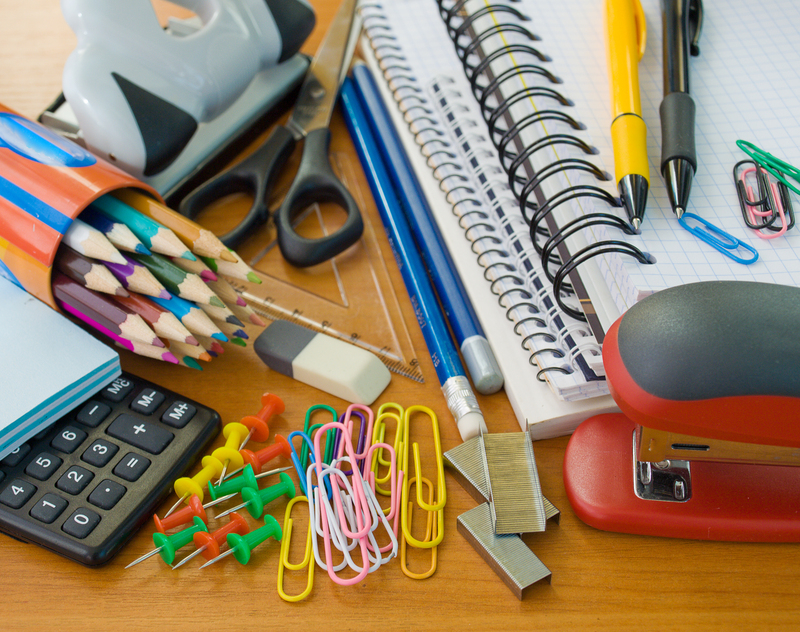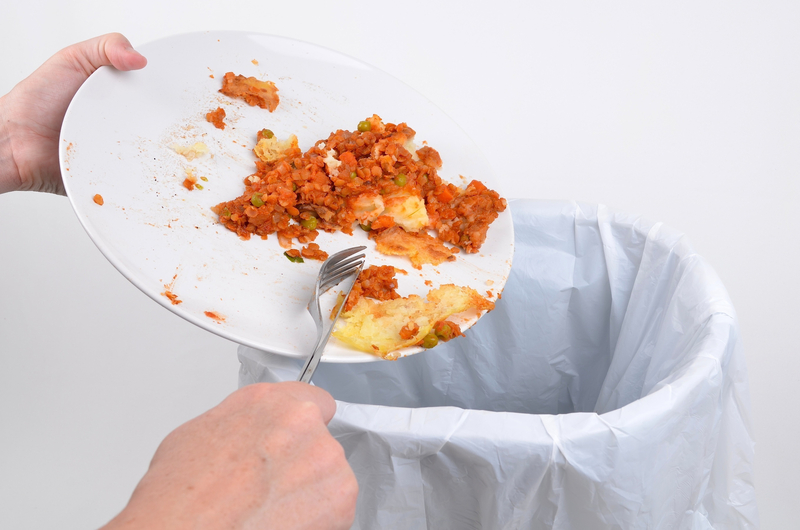Maximize Your Home Recycling with These Helpful Tips
Recycling is an essential practice for protecting the environment and reducing waste. While most households recycle, there are often ways to improve efficiency and effectiveness. If you want to maximize your home recycling, you've come to the right place. This comprehensive guide will walk you through practical strategies and insightful tips to make recycling at home easier, more effective, and even enjoyable.

Why Maximizing Home Recycling Matters
Recycling at home is a perfect starting point for minimizing landfill waste, conserving natural resources, and reducing environmental pollution. Each item properly recycled keeps valuable materials in use, lessens the energy needed for production, and helps fight climate change. By adopting a few thoughtful habits and understanding more about effective home recycling, your household can make a significant impact, all while contributing to a greener planet.
- Reduces landfill space
- Saves energy and water
- Conserves raw materials
- Protects ecosystems
- Supports local economies
1. Learn What's Recyclable in Your Community
Recycling rules vary widely from one city or county to another. Before you begin any new routine, check your local recycling guidelines either online or through your waste management company. This ensures you know exactly what materials are accepted near you and which ones need to be avoided.
- Commonly accepted: Paper, cardboard, certain plastics (#1 and #2), clean aluminum, tin cans, glass
- Often not accepted: Styrofoam, plastic bags, greasy pizza boxes, ceramics, broken glass
- Special recycling: Batteries, electronics, light bulbs, textiles
Tip: Some facilities now offer resources or apps to help homeowners quickly identify what can and cannot be recycled locally.
Stay Updated
Recycling guidelines change as technology and markets evolve. Stay informed by subscribing to updates from your local waste authority or checking their website regularly.
2. Set Up a Home Recycling Station That Works
A well-organized recycling system makes it easier to stick to the habit. Dedicate accessible spots in your home to sort different recyclables - for example, one bin for paper and cardboard, another for plastics and metals, and another for glass. Place your bins near the kitchen, where most recyclables are generated, and have clear signs or labels for each type of material.
- Use color-coded bins to prevent confusion
- Small containers in bathrooms and offices for collecting paper or bottles
- One or two large bins in the garage or outside for weekly pickup
Pro Tip: Rinse containers before tossing them in the bin. Residue from food or liquids can ruin otherwise recyclable materials and attract pests.
3. Know How to Recycle Plastic
Plastic recycling is often misunderstood. Look for the recycling symbol with numbers (known as Resin Identification Codes) on the bottom of containers. Most curbside programs accept only plastic #1 (PET/PETE) and #2 (HDPE).
- #1: Water bottles, soft drink bottles, some food packaging
- #2: Milk jugs, detergent bottles, juice bottles
Rarely accepted kerbside plastics include #3 (PVC), #4 (LDPE), #5 (PP), #6 (PS/styrofoam), and #7 (miscellaneous). These may need to go to specialty recycling centers. Avoid recycling thin films like plastic bags, wrap, or cling film in general bins as they can jam sorting machinery.
Think Beyond Bottles
Don't forget to recycle large plastic containers from laundry detergent, yogurt, or takeout if labeled appropriately.
4. Don't "Wishcycle" - When in Doubt, Leave it Out
"Wishcycling" is when you toss questionable items into your recycling bin, hoping they'll get recycled anyway. Unfortunately, this often leads to contamination, causing entire batches to be sent to the landfill. When you're unsure, check your local resources or throw it in the trash. Quality over quantity is the rule for recycling at home effectively.
Common wishcycled items:
- Disposable coffee cups (these are lined with plastic)
- Food-soiled pizza boxes
- Non-recyclable plastics (bags, wrappers, utensils)
- Broken ceramics or glassware
5. Prep Your Recyclables Properly
Proper preparation ensures that your recyclables are processed correctly. Here's how to do it right:
- Rinse out any food or liquid residue from containers
- Flatten cardboard boxes to save space
- Remove lids and caps (check local rules on this)
- Separate different materials - don't mix glass, metals, and plastics if your program requires them sorted
Why is this important? Dirty or soiled items can contaminate entire loads of recyclables, sending them directly to the landfill and undoing your efforts.
6. Compost Organic Waste
While composting isn't traditional recycling, it's a game-changer for maximizing waste reduction at home. Composting diverts food scraps and yard waste from landfills and turns them into valuable soil. Start a backyard compost pile or use a kitchen compost bin for fruit peels, coffee grounds, eggshells, and yard clippings.
- What to compost: Fruit and vegetable scraps, eggshells, coffee grounds, tea bags, leaves, grass clippings
- Avoid composting: Meat, dairy, oily foods, pet waste
If your city offers a green bin program, take advantage of it for collecting food scraps and yard waste. Integrating composting with your recycling routine truly maximizes home recycling efforts.
7. Reduce and Reuse Before Recycling
Before you recycle, consider if the item can be reused or repurposed. Reducing waste upstream is the most effective way to minimize your ecological footprint. Every item reused is one less destined for recycling or landfill.
- Buy in bulk to reduce packaging
- Use reusable grocery bags, water bottles, and coffee cups
- Repurpose jars, containers, and other packaging for storage
- Donate clothes, toys, and appliances rather than throwing them away
An important fact: Recycling is valuable, but reusing and reducing are even better!
8. Recycle Electronics and Hazardous Materials Responsibly
Many items need special handling and shouldn't go in your curbside bin. E-waste (like old phones, batteries, and appliances), paint, light bulbs, and chemicals require dedicated collection points.
- Check for local e-waste drop-off events
- Retailers often accept batteries, bulbs, and electronics for recycling
- Never place hazardous materials in regular bins - improper disposal can cause environmental harm!
Safe disposal protects workers, community health, and the planet.
9. Educate Your Household
The key to maximizing your home recycling is teamwork. Get your family or roommates on board by sharing guidelines, posting reminders, and involving everyone in the sorting process. Create a fun competition or set recycling goals for your household.
Educating children early on fosters lifelong sustainable habits and makes recycling a shared family responsibility.
10. Stay Motivated: Track Your Progress and Celebrate Success
It's easy to get discouraged, but seeing results can be motivating. Track how many bags or bins of recyclables you divert each month. Calculate your waste reduction, or even weigh your recycling for a more precise measure.
- Set monthly or yearly goals for your home
- Try a "zero waste" challenge for a week or month
- Share your achievements on social media to inspire others
Recognize milestones and reward your household's commitment - it's a journey worth celebrating!
Bonus Tips for Advanced Recycling
- Look for TerraCycle or similar programs for hard-to-recycle items like oral care products, pens, and snack wrappers
- Host a community recycling drive for electronics, paint, or clothing
- Advocate for better recycling options with your local officials or neighborhood association
- Stay informed about new recycling technologies and programs in your area
Advanced home recycling can extend beyond your own household and make a broader community impact.

Frequently Asked Questions About Home Recycling
How can I recycle more at home?
Start by learning local rules, setting up a convenient sorting system, rinsing items properly, avoiding contamination, and participating in programs for items like electronics and textiles. Adding composting to your routine and reducing waste upstream can also dramatically improve your household's recycling rate.
What items are most commonly missed in home recycling?
- Cardboard toilet paper and paper towel tubes
- Lids from yogurt or butter containers (if accepted locally)
- Mail envelopes with plastic windows (remove the window if possible)
- Plastic bottles from the bathroom (shampoo, mouthwash)
Is it really necessary to rinse out recyclables?
Yes! Even a small amount of food or beverage residue can contaminate entire loads of recyclables, making them unusable. Quick rinsing is all it takes to keep materials clean and recyclable.
Can I recycle pizza boxes?
Only the clean, grease-free sections of pizza boxes should be recycled. Tear off soiled parts and compost or discard them. Many municipalities are now accepting pizza boxes, but always double-check your local rules.
Conclusion: Start Maximizing Your Home Recycling Today
By following these actionable tips, your household can turn recycling from a chore into a deeply rewarding habit. Remember to stay informed, sort carefully, and spread the word to family and friends. Small changes, when adopted by many, have a major positive impact on our planet.
Maximize your home recycling efforts today and enjoy a cleaner, greener tomorrow. The planet will thank you!